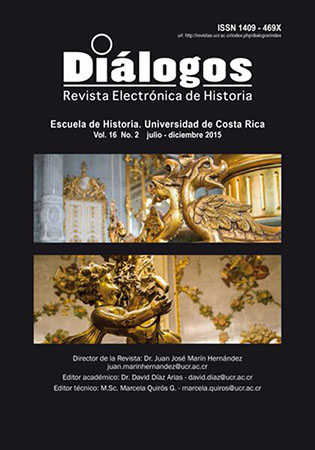Resumen
Resumen
El presente artículo revisa la trayectoria de las centrales azucareras guanacastecas, principalmente el ingenio Taboga y la Azucarera El Viejo, entre 1958 y 1970, es decir su periodo fundacional. Para ello, se analiza el origen del cultivo de la caña en el Pacífico Seco a finales del siglo XIX, los intereses estatales por encontrar alternativas exportables al café, así como los poderosos intereses públicos y privados que consideraban a la cuenca del Tempisque como el lugar idóneo para instalar agroindustrias mecanizadas. Asimismo, de la mano del naciente Estado Interventor de la década de 1950 y junto a conspicuas alianzas políticas, se fraguó el nacimiento de las citadas empresas. Para realizar este trabajo se partió de un marco teórico afín a los estudios del Poder y se revisaron fuentes de archivo, hemerográficas e informes institucionales.
The rise of the sugar corporations in Guanacaste, 1890-1970
Abstract
This article reviews the history of Guanacaste sugar mills, mainly with Ingenio Taboga and Azucarera El Viejo, between 1958 and 1970, its founding period. To this end, the origin of cane cultivation is discussed in the Pacific Dry in the late nineteenth century, state interests to find alternatives to coffee, and the powerful public and private interests who considered Tempisque basin as the ideal place to install mechanized agribusiness. Also, with the help of the “Welfare State” of the 1950s and with conspicuous political alliances, the emergence of these companies was forged. To make this work the main reference was based on the theories of Power and archival sources, newspapers and institutional reports were reviewed.


